Matthew Murrie's Blog, page 10
June 5, 2021
What If You Had No Butt?
What if there were an animal without an anus? Get curious about the Warty Comb Jelly the mysterious ways of its disappearing butt.

What: An animal without an anus? Not exactly, but the warty comb jelly does have a butt that disappears.

Who: Scientist, ,Sidney Tamm discovered the warty comb jelly's disappearing butt while studying how warty comb jellies defecate. Who says science can't be fun and interesting?
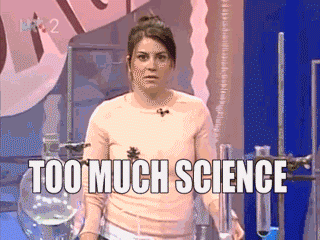
Where: Where does its butt go? “It is not visible when the animal is not pooping,” says Tamm. “There’s no trace under the microscope. It’s invisible to me.” (New Scientist)
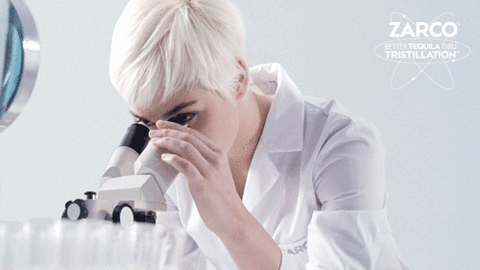
When: When the warty comb jelly invades a new habitat where food is scarce, the warty comb jelly will eat its own young to survive!

How: How does the warty comb jelly go number two without one butt? The warty comb jelly has a six part digestive system. After its stomach is full and the food has been digested the esophagus closes off. The stomach pinches down to a rectangular shape and the anal canals start to fill with poop. When they get all that they can hold, the anal pore magically appears somewhere on the gelatinous body. The jelly then poops and the anal pore disappears leaving no sign of its former self on the jelly’s body. This process can take just 2 to 3 minutes in young warty comb jellies and from 4 to 6 minutes in the adults. Whew!
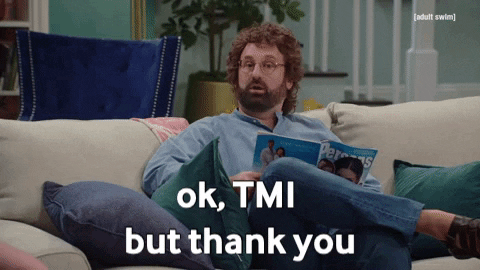
Why: Why does having a disappearing butt make the warty comb jelly special? Because the warty comb jelly is the only animal known to humans with a disappearing butt.

Huh?: Not to be out done by the warty comb jelly, other fellow members of the ,Ctenophora phylum have multiple anuses.

Wow!: What if a disappearing butt isn't the most amazing ability at the warty comb jelly's disposal? Thanks to having the ability of bioluminescence, they can also glow in the dark!

Keep getting curious about animals with ,The Screaming Hairy Armadillo and it's free ,Educator's Guide!
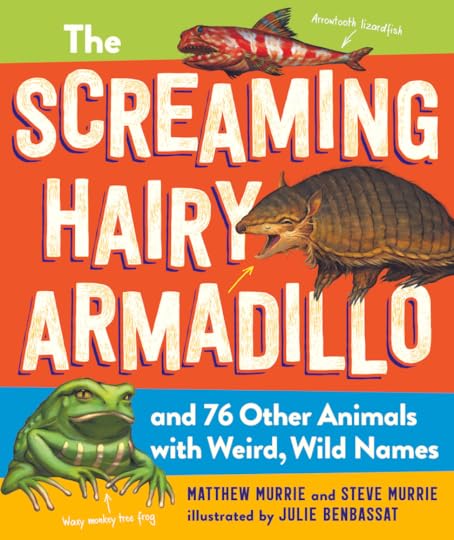
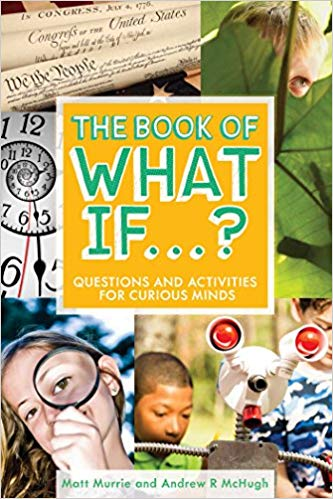
Thank you for your curiosity, stay curious, and let your curiosity lead your learning with more Curiosity-Based Learning content and activities from What If Curiosity!
June 3, 2021
Why Should We Follow and Innovate Methodologies?
Get curious about innovative methodologies with Adolfo Espíritu as he applies his curiosities about methodologies in the first part of a new series on methodologies, curiosity, and more for the Corporation of Tomorrow.
Methodologies are systematic approaches which aim to solve a set of problems. For example, mathematics has developed abstract objects like numbers and algebraic structures to operate with them, giving as a result a practical tool, which can be used to understand the nature, or measure of how a business is doing.
As seen, the same tool has multiple uses, so it can deal with a huge variety of problems. Systematic approaches have their advantages, disadvantages, and limitations when applied to deliver the solution because they were thought for solving a specific set of problems, so it is important to know under which assumptions the method was made and how it works; because these can cause flaws in your result if not considered and dealing with them opens an opportunity for improvement. By generalizing and solving them, systematic means are created, which can reliably be used to approach a wide variety of similar problems to the general one thus, enabling us to discover new problems and combine them to deliver better solutions.
The best methodologies are the ones which combine simple ideas and solve complex problems, so it is important to always think for the easiest solution when trying to tackle a challenge. For example, in math it is common to approach a problem through the Divide and Conquer approach, which divides the main problem into smaller problems, they are solved, and the general solution is made by gathering the smaller resolutions. There is another approach which consists in making an image problem of the original one (see it through other lenses) (this can be seen in Integral Transforms Methods), solve the problem from this other viewpoint, and finally translate the solution to the original point of view.
My best tip here is to think: how would someone who does not know about any particular method solve the problem? In other words, stop "knowing" and approach the problem through the eyes of a child, combined with how a lazy expert would go about solving it, because these approaches force you to find the simplest solution.
It is important to improve our methods because each systematic approach has a cost, whether is time or quality, and the ideal scenario is to have approaches which are highly reliable and have a low time cost.
In conclusion, having more recipes we have for solving problems implies getting reliable solutions in less time, and they also let us see new problems that were not thought before, which become opportunities.
Can a methodology for solving any problem can be developed? Stay tuned to find out.

Adolfo Arana Espíritu Santo is a student at the Monterrey Institute of Technology & Higher Learning and loves getting curious about, Math, Physics, and Quantum Computers.
We'll be exploring questions like these live with curious people from all over the world to connect and collaborate in building the Corporation of Tomorrow (along with the School of Tomorrow), today!
Want to stay curious? What if you feed your curiosity and the Corporation of Tomorrow!


Thank you for your curiosity and stay curious with more Curiosity-Based Learning content and activities from What If Curiosity!
June 2, 2021
What If Bugs Were Assassins?
Welcome to the garden of eatin' where spined assassin bugs pluck out critters for their last suppers... where they're the main course.
What: The spined assassin bug is one of the creepiest critters found in a garden.

Who: Despite being dreaded by the rest of the garden, spined assassin bugs are loved by human gardeners, because the spined assassin bug keeps their gardens free of pests who eat their plants.
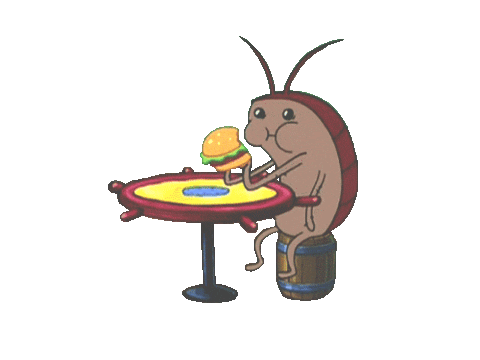
When: "When an unsuspecting caterpillar, ladybug, or roach stumbles by, the assassin pounces with a flash kick of its spiny front legs and attacks the poor critter that made the mistake of crossing this killer's path." The Screaming Hairy Armadillo (p. 66)

Where: No need to travel to exotic locations in order to find this exotic killer, the spined assassin stalks gardens throughout the southern United States and northern Mexico.
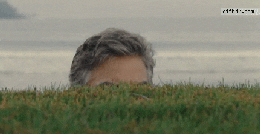
How: What makes spined assassin bugs so super creepy isn't how they use the natural beauty of garden flowers to camouflage themselves as they secretly stalk unknowing passerby out for dinner or a stroll... it's how they use their fang-like beak as part dagger, part syringe to inject their victims with an enzyme that liquifies their internal organs into a goo the spined assassin bug then slurps up, turning it's dagger/syringe into a turkey baster.

Why: Aside from gardeners, why is nature glad to have spined assassin bugs around? For one, they are the most organic pesticide available; with spined assassin bugs eating all the pests that eat up gardens, gardeners don't have to turn to human-made pesticides that can harm more than the pests they're intended to eliminate.

Huh?: Beware of the difference between the spined assassin bug and its close cousin, the "kissing bug"; while the spined assassin bug kills other creatures its own size, the kissing bug can bring down a human! Find out how in The Screaming Hairy Armadillo!
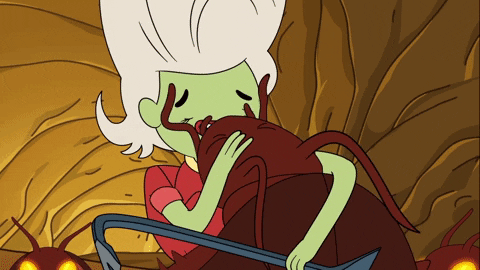
Wow!: The spined assassin but is one of the select animals who sport 3D camo! The additional dimension comes from the spines striping the outside of the spined assassin bug that look a lot like parts of the plant they're hiding in. What other animals can you think of that have more than color-only camo and use textures to blend in?

Keep getting curious about animals with ,The Screaming Hairy Armadilloand it's free ,Educator's Guide!


Thank you for your curiosity, stay curious, and let your curiosity lead your learning with more Curiosity-Based Learning content and activities from What If Curiosity!
May 27, 2021
What If Turtles Breathed from Their Butts?
Well, they ,do... but they're not alone! Some frogs, sea snakes, and salamanders also have adapted the ability to breath with their butt through a process called, ,cutaneous respiration through a unique orifice called a ,cloaca--don't worry, you don't have one--a sort of one-stop-shopping hole for everything coming in or going out of the animal.

While not all turtles are so lucky to breath from their butts, the ,Australian White-Throated Snapping Turtle brings in roughly ,80% of the air it breaths through its butt.

And wait until you get a load of of the ,Mary River Turtle whose butt-breathing ability is no where near its coolest feature: these turtles sport bright green mohawks made of algae on their heads.

If you think turtles breathing out of their butts smells like magic, wait until you get a whiff of the warty comb jellyfish that has a disappearing butt... or the chicken turtle that tastes like chicken! Keep coming back to get curious about these curiously named animals with the coolest (and grossest) adaptations.
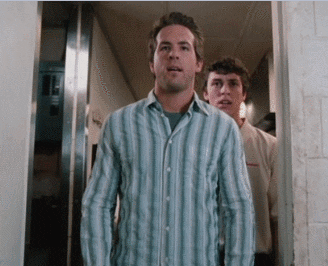
Stay curious with and learn about nature's nuttiest here on the ,Butt Breathing Blog!
Keep getting curious about animals with The Screaming Hairy Armadillo and it's free Educator's Guide!

Thank you for your curiosity, stay curious, and let your curiosity lead your learning with more Curiosity-Based Learning content and activities from What If Curiosity!
May 21, 2021
How Can Science Teach Entrepreneurs to Develop Successful Business Plans?
Get curious about the importance and utility of asking questions with Adolfo Espíritu as he applies his curiosities about questions in the third part of a series on questions, curiosity, and more for the Corporation of Tomorrow.
Acclaimed scientists have a common denominator: They started with a question which led them to a huge discovery, but they did not make their discoveries answering their first questions. Each attempt to solve their questions led them to improve their questions and dive deeper in their quest for getting the right answer. Nowadays, the scientific method is being used not just in natural sciences but in social sciences and in entrepreneurship. The Lean Series (Lean Start-Up and Running Lean by Eric Ries and Ash Maurya respectively) follow the scientific method because each step that requires validation starts with a hypothesis, then it is tested, and finally you draw conclusions. Questions help you to elaborate hypothesis and design mechanisms to test them, and entrepreneurs use them to test their business hypotheses. Under this argument I claim that scientists and entrepreneurs have things in common: they use questions to test their ideas, and through them, they can develop successful business and discoveries.
Tesla has a famous quote: “I don't care that they stole my idea; I care that they don't have any of their own.”
This phrase has a profound implication which applies for both scientists and entrepreneurs. He meant that because It is very unlikely that you will have the solution to an unknown problem at the first try, it is important to have this ability to generate new testable ideas which can be candidates to solve your problem, and in one of this attempts you will get it right. He did not care for the idea stealing because a problem can be solved using different approaches; a single problem has multiple solutions, so one can borrow a solution to a different problem to adapt it to their own problem. Questions help us to generate ideas, so improving our questions enhances our ideas.
Want to learn about how scientific approaches can help you solve daily-life problems? Stay tuned for more entries.

Adolfo Arana Espíritu Santo is a student at the Monterrey Institute of Technology & Higher Learning and loves getting curious about, Math, Physics, and Quantum Computers.
We'll be exploring questions like these live with curious people from all over the world to connect and collaborate in building the Corporation of Tomorrow (along with the School of Tomorrow), today!
Want to stay curious? What if you feed your curiosity and the Corporation of Tomorrow!


Thank you for your curiosity and stay curious with more Curiosity-Based Learning content and activities from What If Curiosity!
May 6, 2021
What if Questioning Like a Kid Can Be a Game Changer?
Get curious about the importance and utility of asking questions with Adolfo Espíritu as he applies his curiosities about questions in the second part of a series on questions, curiosity, and more for the Corporation of Tomorrow.
Three year old Edwin Land’s daughter asked a game changing question to his dad. While Land’s family were enjoying a relaxing vacation in 1943, Edwin took a photograph of his daughter, and immediately she asked why couldn’t they see the picture right away? In those days, an expert would have answered because that is the way the camera works; however, Land also questioned himself and this question led him to a journey which ended with a camera that could develop the picture right away.
So given this case:
Why do we stop questioning? Is a kid better asking questions than adults? What if innovation starts with a question? What if the best way to generate solutions is not brainstorming nor painstorming but questionstorming? What if questioning is one of many keys to unlocking your creativity potential? What if we can improve our questions by letting ourselves think like kids again? What if simple game-changing ideas come from an impossible-to-answer question with your current knowledge? What if questions are the simplest used tools when tackling problems?Questions work as a compass; they guide you through uncertainty to the solution, are the best tools to get to know the unknown, and one of the main drivers for innovation. Ideas are born when trying to answer a question, so, if you want to improve your ideas, first you need to improve your questioning.
Want to learn how to improve your questions? Stayed tuned for further entries.
For further reference check out this book: A More Beautiful Question, by Warren Berger.
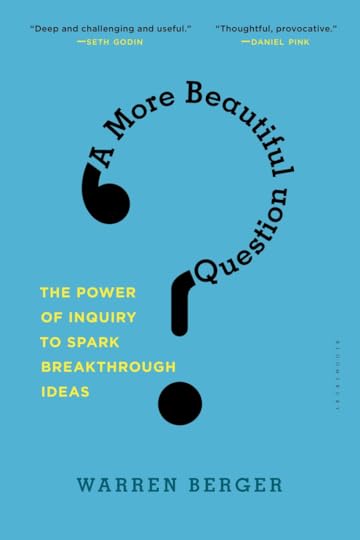

Adolfo Arana Espíritu Santo is a student at the Monterrey Institute of Technology & Higher Learning and loves getting curious about, Math, Physics, and Quantum Computers.
We'll be exploring questions like these live with curious people from all over the world to connect and collaborate in building the Corporation of Tomorrow (along with the School of Tomorrow), today!
Want to stay curious? What if you feed your curiosity and the Corporation of Tomorrow!


Thank you for your curiosity and stay curious with more Curiosity-Based Learning content and activities from What If Curiosity!
April 29, 2021
What If a Blog Breathed Out of Its Butt?

Welcome to the Butt Breathing Blog, inspired by all the butt breathing turtles and other animals who go to the wildest extremes in how they adapt in order to survive.
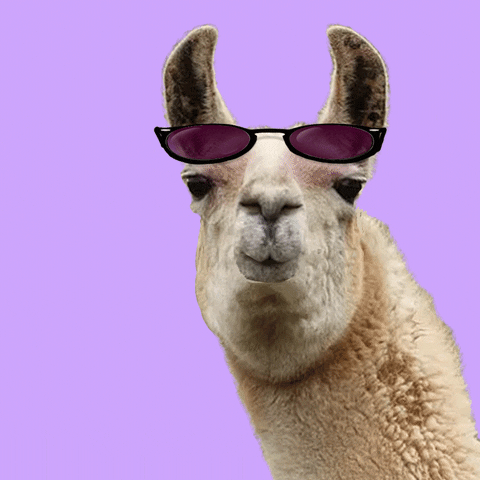
(Note: llamas have not adapted the ability to wear sunglasses... yet.)
What if one of the most memorable things my dad and I discovered while researching curiously named animals for our book, The Screaming Hairy Armadillos, was about an animal that isn't even in The Screaming Hairy Armadillo!

Turns out, some turtles can breath from their butts.

After you let that sentence sink in, you might wonder: why? Why would anything want to breathe from its butt?
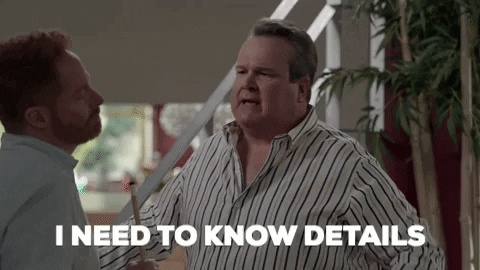
It's all about survival: some turtles have adapted the ability to breath from their behinds because when they're digging in deep along the sides of lakes and ponds to survive the cold and ice of winter, the only way they can get air to breath is through their back end sticking up out of water.

Even better, after getting curious about the hows, the whys, and the WTHs of butt breathing turtles, we found out these turtle butts are just sniffing the surface of what nature has in store for us to discover about weird, wacky, and down right disgusting adaptations and behaviors plants, animals, and fungi have developed to survive in some of the strangest ways possible.

Stay curious with and learn about nature's nuttiest here on the Butt Breathing Blog!

Keep getting curious about animals with The Screaming Hairy Armadillo and it's free Educator's Guide!
Thank you for your curiosity, stay curious, and let your curiosity lead your learning with more Curiosity-Based Learning content and activities from What If Curiosity!
April 28, 2021
Why Should We Question?
Get curious about the importance and utility of asking questions with Adolfo Espíritu as he applies his curiosities about questions in the first part of a series on questions, curiosity, and more for the Corporation of Tomorrow.
Questions are a manifest of curiosity; they are made because one seeks an answer to expand their knowledge. If I were to summarize the innovation process proposed by Ash Maurya for developing a business plan that works, I would divide it into three phases:
Understanding the problem Develop a solution Prove that it worksAlbert Einstein once said that if he had an hour to solve a problem, he would expend 55 minutes for understanding the problem and the rest solving it. Understanding the problem implies that you can draw it; you can identify the root cause and can extract all the essences. By having this panorama, solutions come naturally, or at least it points you where you must search because you know what is needed to be solved. One simple but difficult question to answer is Why is it a problem and why do I have it? This is a basic question which can trigger innovation because the next logical question is How do I solve it?
This question can be answered using multiple approaches (the first one is proposing a solution and do benchmark (seeing if there is a similar solution to yours), or the second one is to search for a similar problem and its solutions, so you can adapt them to your own). During this search it is important to have a guarantee that the solution will work, so this issue can be addressed by asking how can I prove that this solution will solve my problem? There are two ways to find out: either by investigating that there are similar solutions to yours which work or by experimentation. If you go for experiments, you have two possible outcomes: either your idea hits the nail and works, or you find a way that does not solve your problem, so questions here help you to analyze your results and learn. This knowledge can help you to improve your solution to the problem and can be used for similar future problems. At the end, questions are the main drivers for solving problems and innovation.
Want to know more about questions? Stay tuned for more entries.
For further reference check:
Warren Berger. (2016). A More Beautiful Question. USA: Bloomsbury Ash Maurya. (2012). Running Lean Iterate from Plan A to a Plan that Works. USA: O'Reilly.
Adolfo Arana Espíritu Santo is a student at the Monterrey Institute of Technology & Higher Learning and loves getting curious about, Math, Physics, and Quantum Computers.
We'll be exploring questions like these live with curious people from all over the world to connect and collaborate in building the Corporation of Tomorrow (along with the School of Tomorrow), today!
Want to stay curious? What if you feed your curiosity and the Corporation of Tomorrow!


Thank you for your curiosity and stay curious with more Curiosity-Based Learning content and activities from What If Curiosity!
April 9, 2021
What If You Innovate Like an Octopus?
Ever wonder what it would be like to innovate multiplied by eight?
Already know all there is to know about octopuses? Wonderful! Need a little refresher before we begin this Curiosity-Based approach to creating the entrepreneurs and corporations of tomorrow? What if you take a minute to rekindle your curiosity with the Wonderful Wunderpus!
Ready! Get curious! Go!
What if you woke up one day and were an octopus?
1 What are 8 things you'd be excited about?
2 What are 8 things you'd be most concerted about?
3 What if you had 8 arms instead of two to innovate? Describe (in a single sentence) how they would use each arm.
4 What 8 characteristics about octopuses are you the most curious to learn more about?
5 What if different species of octopuses could takeover different tasks or roles at that are currently keeping you from innovating? Assign 8 different species of octopuses to 8 different tasks or roles.
6 How would you overcome the underwater/out of water barrier between you, the octopus innovator and your still-human colleagues and/or customers?
7 What are 8 things you are most excited to innovate as an octopus?
8 What if, instead of becoming an octopus, you innovated with an octopus? What are 8 ways that would be the best?
*One last question to wonder about for all of the 21st Century leaders out their: Where is the wonder in your leadership? What are you doing to not inspire, but encourage wonder among your workers, customers, community, and the world?
What if you keep the curiosity going with The Screaming Hairy Armadillo? Here are some other questions to consider while reading about the curiously named, wunderpus:
Keep getting curious about animals with The Screaming Hairy Armadillo and it's free Educator's Guide!


Thank you for your curiosity, stay curious, and let your curiosity lead your learning with more Curiosity-Based Learning content and activities from What If Curiosity!
April 8, 2021
What If You Were Hell-Bent to Succeed?
What if you forget the gurus and motivational speakers and get curious about the hellbender to discover your drive for success?
The hellbender is the largest known salamander in the Americas; it is also commonly known as the devil dog, lasagna lizard, and snot otter, depending on which stream it swims.
Yet, the hellbender doesn't just bend its name: as an amphibian, its survival depends on its ability to bend its very existence. Water? Land? The hellbender finds success with both?
Amphibians like the hellbender bend what humans would find impossible, to bring them survival success. What are your currently bending--or attempting--to bend to bring you greater success? What could you be bending?
What if the Corporation of Tomorrow is constantly bending--and testing what can be bent?
After all, what if bending is really just blending? What if "bending" is really just a formal process of hybridization?
And what if an effective process of hybridization is akin to magic? How? What if a true hybrid represents 1 + 1 = 3? What if the hellbender is a fish (1) a lizard (1) and a hellbender (1)?
What if the Corporation of Tomorrow identifies and creates hybrid systems that produce more than the sum of their parts in order to deliver value greater than the resources to deliver it?
Curious how? We're exploring and sharing here with the Corporation of Tomorrow.
Want to stay curious? What if you feed your curiosity and the Corporation of Tomorrow !


Thank you for your curiosity and stay curious with more Curiosity-Based Learning content and activities from What If Curiosity!



